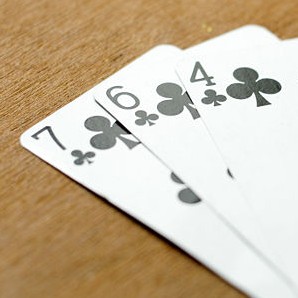Our last article on the uncontrollable nature of luck was just downright depressing. To lift spirits & morale, this article showcases more comforting content on factors that are within an investor’s control. The following excerpts are extracted from a piece by Michael Mauboussin written in 2002 titled The Babe Ruth Effect - Frequency versus Magnitude. Expected Return, Sizing
Quoting Buffett from the 1989 Berkshire Hathaway Annual Meeting: “Take the probability of loss times the amount of possible loss from the probability of gain times the amount of possible gain. That is what we’re trying to do. It’s imperfect, but that’s what it’s all about.”
“…coming up with likely outcomes and appropriate probabilities is not an easy task…the discipline of the process compels an investor to think through how various changes in expectations for value triggers—sales, costs, and investments—affect shareholder value, as well as the likelihood of various outcomes.”
“Building a portfolio that can deliver superior performance requires that you evaluate each investment using expected value analysis. What is striking is that the leading thinkers across varied fields—including horse betting, casino gambling, and investing—all emphasize the same point.”
“…a lesson inherent in any probabilistic exercise: the frequency of correctness does not matter; it is the magnitude of correctness that matters.”
“Constantly thinking in expected value terms requires discipline and is somewhat unnatural. But the leading thinkers and practitioners from somewhat varied fields have converged on the same formula: focus not on the frequency of correctness, but on the magnitude of correctness.”
Bill Lipschutz, a currency trader featured in Jack Schwager’s book New Market Wizards advised readers that, “You have to figure out how to make money being right only 20 to 30 percent of the time.”
Strange as this advice may seem, it is congruent with Mauboussin’s words above that “the frequency of correctness does not matter; it is the magnitude of correctness that matters.” Depending on how you translate expected return estimations into portfolio sizing decisions, it is possible to make $ profits by being “right” less than 50% of the time (by upsizing your winners), just as it is possible to lose $ capital by being “right” more than 50% of the time (by upsizing your losers).
Psychology, Expected Return, Sizing
“The reason that the lesson about expected value is universal is that all probabilistic exercises have similar features. Internalizing this lesson, on the other hand, is difficult because it runs against human nature in a very fundamental way.”
“…economic behaviors that are inconsistent with rational decision-making… people exhibit significant aversion to losses when making choices between risky outcomes, no matter how small the stakes…a loss has about two and a half times the impact of a gain of the same size. In other words, people feel a lot worse about losses of a given size than they feel good about a gain of a similar magnitude.”
“This behavioral fact means that people are a lot happier when they are right frequently. What’s interesting is that being right frequently is not necessarily consistent with an investment portfolio that outperforms its benchmark…The percentage of stocks that go up in a portfolio does not determine its performance, it is the dollar change in the portfolio. A few stocks going up or down dramatically will often have a much greater impact on portfolio performance than the batting average.”
“…we are risk adverse and avoid losses compounds the challenge for stock investors, because we shun situations where the probability of upside may be low but the expected value is attractive.”
Selectivity, When To Buy, Patience
“In the casino, you must bet every time to play. Ideally, you can bet a small amount when the odds are poor and a large sum when the odds are favorable, but you must ante to play the game. In investing, on the other hand, you need not participate when you perceive the expected value as unattractive, and you can bet aggressively when a situation appears attractive (within the constraints of an investment policy, naturally). In this way, investing is much more favorable than other games of probability.”
“Players of probabilistic games must examine lots of situations, because the “market” price is usually pretty accurate. Investors, too, must evaluate lots of situations and gather lots of information. For example, the very successful president and CEO of Geico’s capital operations, Lou Simpson, tries to read 5-8 hours a day, and trades very infrequently.”
In a June 2013 speech, Michael Price shared with an audience his approach to portfolio construction and sizing. His portfolio consists of as many as 30-70 positions (his latest 13F shows 89 positions). Price then compares and contrasts across positions, giving him a more refined palette to discern the wheat from the chaff, and eventually sizes up the ones in which he has greater conviction.
When To Sell, Psychology, Expected Return
“Investors must constantly look past frequencies and consider expected value. As it turns out, this is how the best performers think in all probabilistic fields. Yet in many ways it is unnatural: investors want their stocks to go up, not down. Indeed, the main practical result of prospect theory is that investors tend to sell their winners too early (satisfying the desire to be right) and hold their losers too long (in the hope that they don’t have to take a loss).”





